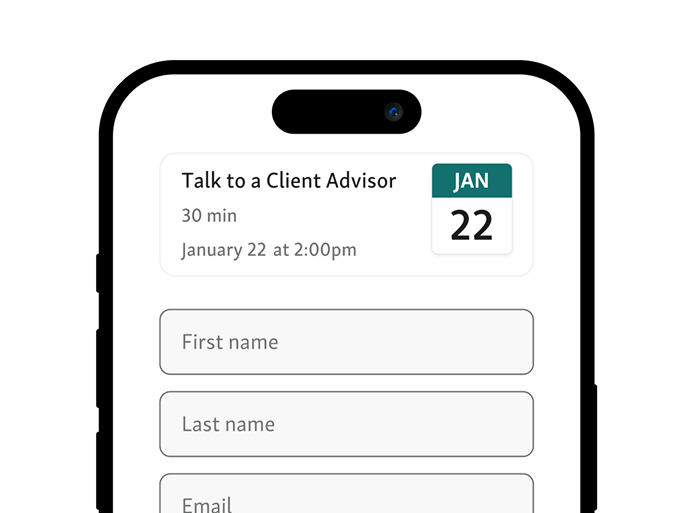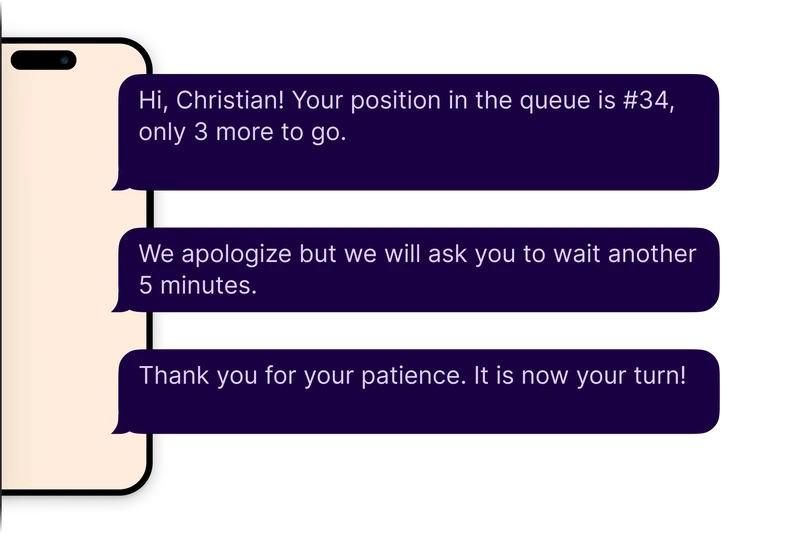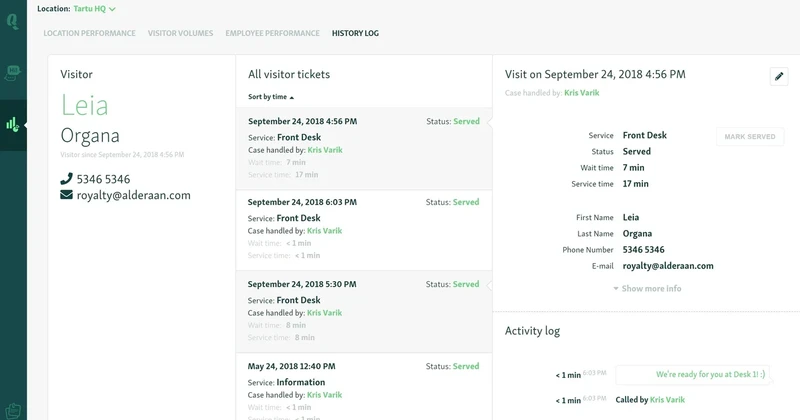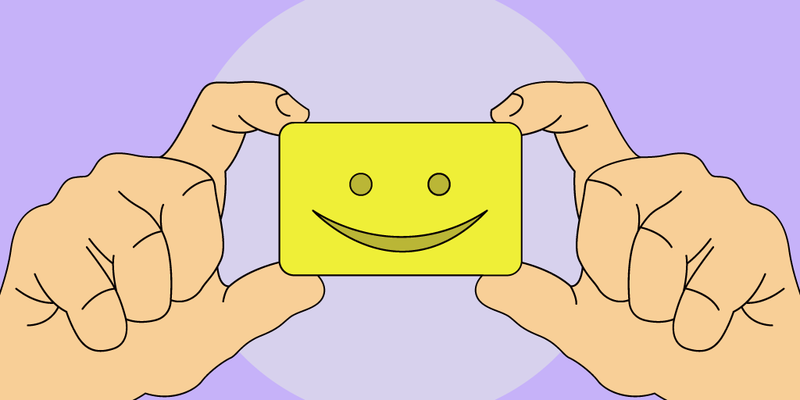The customer experience pyramid is your roadmap for improving how people interact with your business. This structured customer experience model shows you the different levels of what customers need, basic expectations at the bottom, emotional connection and loyalty at the top.
Using a customer experience management framework, organizations figure out their current position and which steps get them climbing upward.
Every stage means a different kind of engagement, which helps businesses create relationships that actually matter to their audience.
In this article, we'll walk through the types of customer experience, break down how the pyramid operates, and give you practical methods to deliver service that's both consistent and memorable.
What is the Customer Experience Pyramid?
The customer experience pyramid shows how customer needs progress from basic service expectations to emotional connection. At the base, people want clear communication, quick service, and easy access. As you move up, the focus shifts to trust, enjoyment, and long-term loyalty.

Forrester's Harley Manning describes great experiences as:
Useful — delivers value
Easy — intuitive and stress-free
Fun — emotionally engaging
These layers match how our brains work: the new brain values usefulness, the old brain seeks ease, and the middle brain connects through emotion.
A customer queue system supports the foundation of the customer experience model by improving speed, clarity, and comfort, helping move customers toward more meaningful engagement.
Why It Matters for Businesses and Public Services
The customer experience pyramid shows organizations how to meet customer needs at each stage. When you address every level of the customer experience model, functional to emotional, satisfaction and trust grow on their own.
You get stronger loyalty, better word-of-mouth, and higher service ratings in both private and public sectors.
Here's why it matters:
Meeting basic needs makes people confident in your service
Going past expectations creates emotional connection
Keep improving consistently and you build long-term loyalty and advocacy
You might also like - How Queue Management Software Helps Government Offices
3 Types of Customer Experience
The customer experience pyramid runs on three main types of experiences: functional, emotional, and social. Each one shows a different layer of how people connect with your service. Queue management and digital tools make each layer stronger.
1. Functional Experience
This foundation holds up every customer experience model. It covers the basics, how fast, clear, and easy your service runs. When people get what they need quickly without confusion, they start trusting your organization.
Queue management tools let customers check in remotely and skip physical waiting
Digital kiosks and signage give clear, self-guided instructions that prevent frustration
Example: A hospital running a virtual queue system lets patients sign in from phones and check estimated wait times. The experience becomes smooth and predictable.

2. Emotional Experience
This level deals with how customers feel during their interaction. Fast service means nothing if it feels cold or indifferent. Emotional experiences need empathy, care, and clear communication.
Real-time SMS updates calm visitors and cut anxiety while they wait
Personalized greetings or friendly staff interactions build emotional connection
Example: A government office displays waiting progress on screens and sends update messages. Visitors feel respected and valued instead of ignored.

3. Social Experience
The top layer of the customer experience pyramid builds belonging and shared connection. It transforms satisfied customers into advocates who trust and recommend you.
Post-visit surveys and feedback loops make people feel heard and involved
Data analytics spot loyal customers for personalized recognition or rewards
Example: A public service center uses queue management analytics to identify repeat visitors. They thank them personally through automated follow-ups. Everyday interactions become genuine loyalty.
Levels of the Customer Experience Pyramid
Each stage of the customer experience pyramid builds on the last, from functional needs to emotional and transformational connections that drive loyalty. Let’s take a look at them:
Base Level – Functional Needs
At the base of the customer experience pyramid are functional needs, the essentials that define a smooth, dependable interaction. Customers expect fast service, easy access, and clear instructions. When these basic expectations aren’t met, satisfaction drops no matter how strong the higher-level experiences may be.
Key ways to meet functional needs:
Self-service kiosks that allow quick and simple check-in
Clear signage and digital directions to guide visitors easily
Queue management systems that reduce waiting times and improve visibility
Focusing on this foundation ensures the first layer of the customer experience model is solid. Queue solutions help achieve this by improving speed, clarity, and organization, laying the groundwork for more meaningful experiences higher up the customer experience management framework.
Middle Level – Emotional Needs
The middle stage of the customer experience pyramid focuses on how customers feel during their interaction. Beyond efficiency, people want to feel respected, valued, and kept informed. Meeting these emotional needs helps turn a neutral experience into a positive one that builds trust and connection.
Ways to strengthen emotional engagement:
Timely updates that keep visitors informed and reduce anxiety
Staff engagement that creates friendly, reassuring interactions
Clear communication tools, such as waiting room displays or real-time messages
Features like automated SMS updates and waiting room screens directly support this level of the customer experience model, helping customers feel cared for and confident while they wait.

Top Level – Transformational Needs
The top of the customer experience pyramid is where real customer loyalty is built. At this stage, experiences go beyond simply meeting expectations, they create lasting emotional connections. Customers feel recognized, understood, and appreciated. This is where relationships turn into advocacy, and service becomes something worth talking about.
Here’s how businesses can reach that level:
Personalized notifications that remember visitor preferences and past interactions
Smart analytics that reveal recurring pain points and highlight improvement areas
Queue management insights that help tailor future visits and anticipate customer needs
When organizations use the customer experience model to personalize service, every interaction feels intentional.

Read more - How Exceptional Customer Experiences Improve Patient Satisfaction in Hospitals and Clinics
Customer Experience Model vs. Customer Experience Pyramid
The customer experience pyramid fits into a bigger customer experience management framework. The pyramid focuses on customer need levels, functional up to emotional. The customer experience model covers the whole journey from first interaction through long-term loyalty. Here’s a comparison table:
Aspect | Customer Experience Pyramid | Customer Experience Model |
Focus | Levels of customer needs (functional, emotional, transformational) | The complete end-to-end customer journey |
Purpose | To prioritize and fulfill customer expectations at different stages | To design, manage, and improve overall experience touchpoints |
Application | Helps identify emotional and practical needs | Guides strategy, process design, and customer service goals |
Outcome | Builds engagement and loyalty through emotional connection | Ensures consistent, measurable customer satisfaction across channels |
Example | Queue management that reduces wait times and enhances comfort | An organization-wide framework that integrates queue systems for efficiency and personalization |
You might also like - Ticket-Based vs Virtual Queue Systems for City Halls and Government Offices
Implementing the Pyramid in Real Life
Turning the customer experience pyramid into practice means understanding how to meet customer needs at every stage, from fast, functional service to meaningful connection. Queue management tools make it possible to deliver all three levels seamlessly across industries.
Here’s how it works in different settings:
Government offices: Self check-in kiosks and online booking simplify the process, meeting functional needs by reducing long lines and confusion. Real-time SMS updates keep citizens informed, covering the emotional level by reducing frustration. Personalized feedback requests close the loop, fostering transformational engagement and trust.
Clinics and hospitals: Virtual queues let patients wait comfortably rather than in crowded areas. Automated notifications and waiting room displays help manage anxiety, while analytics track peak times for better service planning, addressing every layer of the customer experience model.
Retail environments: Queue management systems support faster checkout and smoother service flow. Personalized notifications, loyalty-based updates, and multilingual options enhance inclusivity and customer experience management framework goals, turning routine visits into brand-building experiences.
In each case, Qminder ties together the functional, emotional, and transformational needs of customers, helping organizations move up the customer experience pyramid with every interaction.
Start Boosting Your CX with Qminder
Building Stronger Connections Through the Customer Experience Pyramid
The customer experience pyramid shows us that satisfaction goes beyond fast service - you build it layer by layer. Meeting functional needs creates reliability. Addressing emotional needs builds trust. Fulfilling transformational needs inspires loyalty.
When every level of the customer experience model works together, customers feel genuinely cared for, not just processed through.
Tools like Qminder make this happen by combining real-time queue management, self check-in, and personalized communication in one system.
Book a demo with Qminder today and see how it elevates every customer interaction.
Even without large teams or complex tools, small businesses can apply the customer experience pyramid by focusing on basics first, speed, communication, and empathy. Simple steps like using digital queue tools or personalized follow-ups can help meet each level of customer need.
The biggest challenge is consistency. Many organizations meet functional needs but struggle to sustain emotional or transformational connections. Using a structured customer experience management framework helps track, measure, and improve every touchpoint.
Digital tools like queue management systems address all levels of the customer experience model, functional (speed and access), emotional (clear updates), and social (loyalty and engagement). They simplify service delivery while deepening customer relationships.






